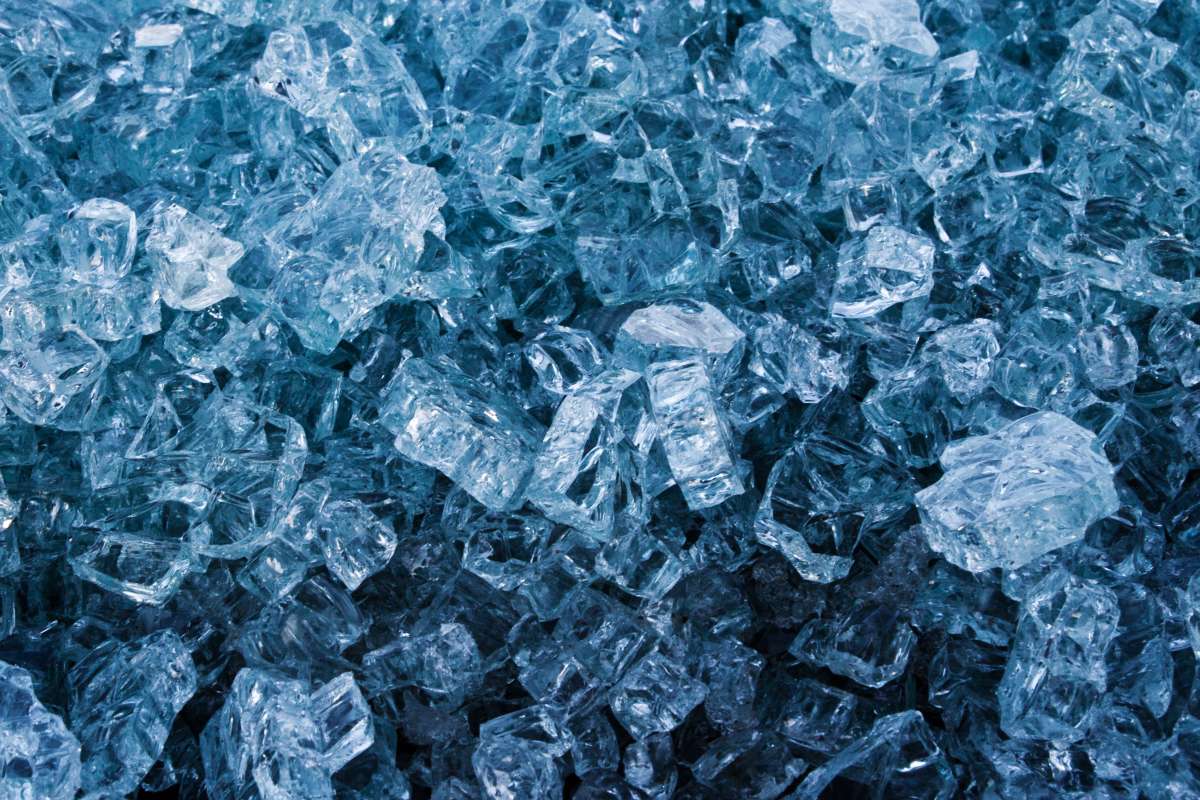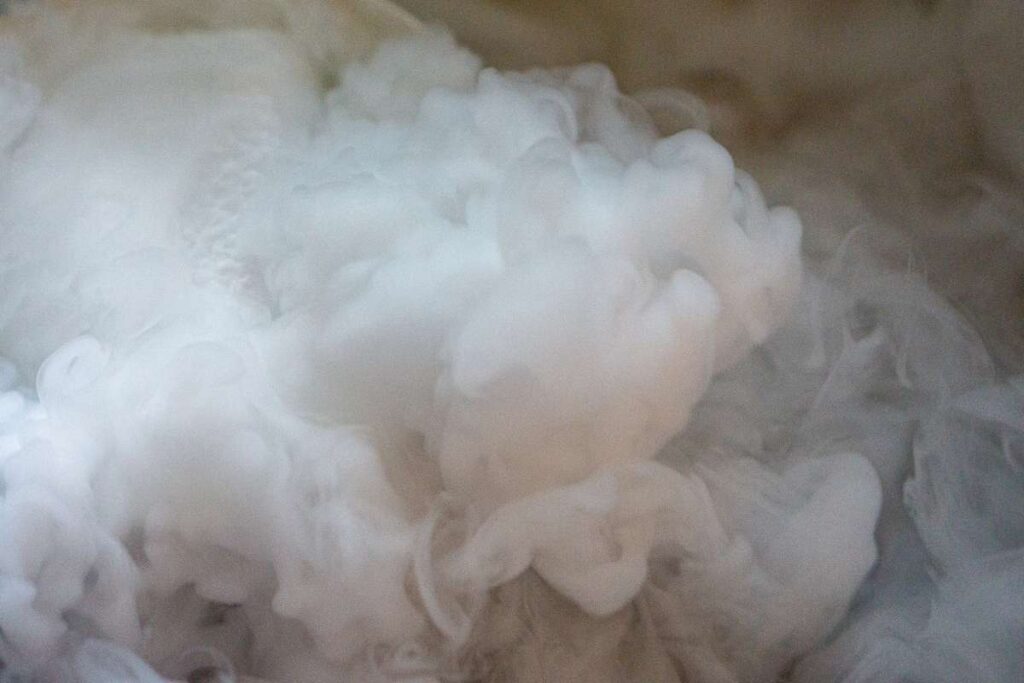Creating a magical wedding ambience with dry ice fog effects adds a stunning visual element, especially for moments like the first dance or grand entrances.
Dry ice produces a dense, low-lying fog that flows beautifully across the floor when it comes into contact with hot water.
This guide will walk you through each step, from setup to safety, ensuring an impressive, safe, and lasting fog effect for weddings.
Let's get straight to the point
Dry ice fog effects add a magical touch to a stunning wedding ambience, perfect for moments like the first dance or grand entrances.
This guide covers step-by-step setup and safety tips to ensure a smooth, enchanting effect.
Start by gathering essential materials like dry ice (5-10 pounds for small areas, up to 20 for large areas), a large insulated container, and hot water to activate the fog.
Position the container strategically, and slowly add dry ice with insulated gloves and tongs to control the fog output.
Fans or container placement can help guide the fog’s flow across the dance floor or aisle. Maintaining hot water and dry ice levels is key for continuous fog, especially during major wedding moments.
Finally, safety precautions like ventilation and guest distance should be prioritised to keep everyone safe. Properly planned, dry ice fog can transform a wedding into an unforgettable, romantic scene.
1. Gather Necessary Materials And Prepare Equipment

Before activating the dry ice fog effect, gather all the materials and equipment needed to ensure a smooth and safe process.
- Dry Ice: Plan for 5–10 pounds of dry ice for most setups. If the wedding venue is large or you want prolonged fog effects, consider using up to 20 pounds. Larger quantities allow for consistent fog throughout key wedding moments.
- Large, Insulated Container: The container must withstand extreme temperature differences and safely hold both hot water and dry ice. Insulated containers keep the water warmer longer, extending the fog effect.
- Hot Water Source: Have a nearby hot water source, such as a kettle or access to a faucet with hot water, for quick and easy refills. Hot water is essential, as it activates the fog, causing the dry ice to sublimate rapidly.
- Insulated Gloves and Tongs: Insulated gloves are mandatory when handling dry ice, as direct contact can cause frostbite. Use tongs for added safety and control when adding dry ice to the container.
Tip: Choose a container holding at least 4–5 gallons of water. Larger containers can produce more fog and require less frequent refills.
2. Position The Container Strategically For The Best Fog Effect
Placing the container correctly enhances the fog’s impact, guiding it toward specific areas for maximum effect. Consider the following placement options:
- Dance Floor: Position the container near or slightly elevated from the dance floor. This placement allows fog to roll over the floor, creating a magical setting for the first dance.
- Aisle Entrance: Position the container at the start of the aisle for a fog-covered aisle. The fog will spread down the path, creating an enchanting entrance for the couple.
- Reception Areas: For a continuous effect throughout the reception, place the container in a central but discreet area that will not obstruct guests’ movements. This placement helps maintain a gentle fog over the floor without overwhelming the space.
Safety Note: To avoid accidental spills or disturbances, ensure the container is placed in a stable, low-traffic area.
3. Add Hot Water To The Container For Optimal Fog Production
Fill the container with 4–5 gallons of hot water before adding the dry ice. Hot water is essential, as it triggers the sublimation of dry ice, creating a thick, misty fog.
- Water Temperature: For best results, the water should be around 50°C (122°F) or higher. Hotter water will produce a more intense fog effect, speeding up the sublimation process.
- Fog Density: The warmer the water, the denser the fog will appear, which is ideal for creating a dramatic atmosphere.
Tip: Keep extra hot water nearby for quick refills as the water in the container cools, helping to maintain fog production.
4. Carefully Add Dry Ice To Activate The Fog
With insulated gloves on, use tongs to add dry ice to the container of hot water. Adding dry ice slowly and in small amounts helps control the initial fog output, preventing excessive splashing and waste.
- Add Slowly: Start by gradually adding 5–10 pounds of dry ice to the hot water to create a steady fog effect. Avoid adding it all at once, as this can cause splashing and overwhelming fog.
- Replenish Regularly: Add smaller pieces every 10–15 minutes to maintain the fog. This will keep the fog consistent without using all the dry ice simultaneously.
- Avoid Overloading: Too much dry ice at once may create excessive fog, which can obscure visibility or overwhelm the area, particularly indoors.
Pro Tip: Smaller pieces of dry ice sublimate faster, creating thicker fog for shorter periods. For prolonged fog, alternate between adding small and larger chunks.
5. Direct And Control The Flow Of Fog
To achieve the desired effect and control the direction of the fog, use small fans or strategically place the container to guide the fog flow naturally.
- Handheld Fans: A small fan can gently direct the fog over specific areas, such as the dance floor or aisle, without disrupting the natural fog effect.
- Container Positioning: If you want the fog to flow downwards, place the container slightly elevated from the floor. For a ground-hugging fog, position it close to the floor, allowing the CO₂ fog to stay low and drift naturally.
Tip: CO₂ fog naturally stays close to the ground due to its weight, making it ideal for low, spreading fog effects.
6. Maintain Water Temperature And Dry Ice Levels For Continuous Fog
As the water cools, fog production will slow. Regularly add hot water and dry ice to the container to keep the effect active.
- Refill Hot Water: Approximately every 15–20 minutes, add fresh hot water to the container to maintain an optimal temperature for fog production.
- Replace Dry Ice: Add small amounts of dry ice periodically to keep the fog flowing steadily and ensure consistency throughout the event.
Caution: Be mindful not to splash when adding hot water and dry ice to the container, as both can cause burns or frostbite.
7. Time The Fog For Key Wedding Moments
For maximum effect, time the fog activation with specific wedding moments. Begin fog production 5–10 minutes before key events like the first dance or the couple’s grand entrance.
- First Dance: Start the fog effect a few minutes before the couple steps onto the dance floor. This setup allows the fog to spread across the floor, creating a breathtaking entrance.
- Aisle Walk: Activate fog just before the couple begins their walk down the aisle, giving them a romantic, mist-filled path to the altar.
- Reception Enhancements: Keep the fog around the reception for an ethereal ambience during toasts, cake cutting, or other special dances.
Tip: Designate an assistant to monitor the fog levels and add more dry ice or hot water to maintain a steady effect throughout these key moments.
8. Essential Safety Precautions For Using Dry Ice
Safety is essential when handling dry ice at weddings, particularly with guests present. Follow these safety measures to avoid accidents and ensure a positive experience for everyone.
- Use Insulated Gloves and Tongs: Always handle dry ice with insulated gloves and use tongs to avoid direct contact, which can cause frostbite.
- Provide Adequate Ventilation: Dry ice releases CO₂ gas, which can accumulate in closed spaces. Use it in well-ventilated or open areas to prevent high CO₂ concentrations.
- Maintain Safe Distances: Keep guests, especially children and pets, safe from the fog source to prevent accidental contact with the container or dry ice.
Note: Avoid using dry ice in confined areas without proper ventilation, as CO₂ build-up can be hazardous.
Additional Tips For Enhancing Fog Effect

- Break Up Large Chunks: Breaking the dry ice into smaller pieces increases the surface area, leading to quicker sublimation and denser fog.
- Monitor Temperature Regularly: Check the water’s temperature often and refill with hot water to keep the fog consistent.
- Limit Duration: Control the fog duration to prevent excessive CO₂ build-up and maintain visibility for guests.
Conclusion
Incorporating dry ice fog effects into a wedding can transform key moments into unforgettable experiences, adding an elegant, magical ambience to the event.
By following these steps—preparing carefully, handling dry ice safely, and timing the fog for significant moments—you’ll create a stunning atmosphere for the couple and their guests.
Prioritise safety measures, including insulated gloves and adequate ventilation, to ensure a smooth and secure setup.
With thoughtful planning, dry ice fog can elevate the romance and visual impact of any wedding, leaving lasting memories of a truly enchanting celebration.
FAQs About Dry Ice
How Long Does Dry Ice Last? As a rough rule, five pounds of dry ice will turn from a solid to a gas in 24 hours. It's best to pick up the block of ice just a few hours before your party so it's as frozen as possible when the bash starts.
The dry ice packs are delivered to you in the dehydrated form. They only need to be soaked in water so the cells can be activated and become an ice pack. It only needs to be soaked in water for the first time. Once the ice sheet is fully hydrated, it can be used over and over again like any other ice pack.
Only feed small amounts of Dry Ice at a time being sure to run enough hot water to turn it all into its gas form quickly.
For the most effective use, wrap the dry ice in a few layers of newspaper and place it on top of the food. You can place regular ice below. The dry ice will last longer if you don't let it come in contact with any water. Fill any dead space in your cooler with wadded-up newspaper.
Dry ice should never be consumed. Not only can it burn internally, it releases gas as it turns from a solid to a gas. In a bar setting, dry ice bubbles and makes fog when submersed into warmer liquids. However, serving a customer a drink with dry ice in it allows the possibility that the customer can swallow it.

